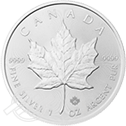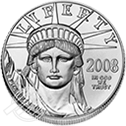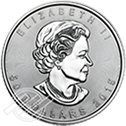Gold IRA Tax Rules: Everything You Need to Know
Gold IRA tax rules and regulations are the same that govern the IRA you may already own or are familiar with.
Understanding Gold IRA tax rules for 2023 and beyond is essential. You must conduct transactions that fit within the parameters to avoid costly penalties and expensive tax consequences.
We will educate you on the different types of IRAs, how to contribute to your IRA, how to withdraw from your IRA, and how withdrawals are taxed.
Are Gold IRAs Taxable?
Gold IRAs are taxable. The type of IRA you choose determines how and when the IRS taxes your account gets.
There are three types of Gold IRAs:
- Traditional
- Roth
- Simplified employee pension (SEP)
Each has its own set of rules governing contributions, withdrawals, and taxation.
Based on your income, investment goals, and employment, you decide which type of IRA is right for you.
Consult your certified public accountant (CPA) or tax professional for more guidance on which type of IRA best suits your needs.
Gold IRA Tax Rules
The IRS determines the rules for IRAs.
It dictates eligibility for bars and coins, how to contribute or withdraw those bars and coins, and how to store them.
These rules help protect the long-term viability of your IRA investment. They also make investing in a Gold IRA (and Silver IRA) one of the safest ways to own precious metals.
Use Approved Bars and Coins
The IRS has strict guidelines for the quality, purity, and origin of IRA-approved bars and coins.
To be accepted and stored in an IRA, gold coins must be:
- Manufactured by a government mint
- New, uncirculated and in perfect physical condition
- 99.5% pure
- Proof coins must be in original packaging and include certificate of authenticity
To be accepted and stored in an IRA, gold bars and rounds must:
- Be 99.5% pure
- Come from manufacturers, assayers and refiners listed on on the COMEX and other approved exchanges
Gold jewelry, scrap gold, pirate ship coins, and even some other coins︱—such as South African Krugerrands—do not meet the qualifications for ownership in an IRA.
Understand Contribution and Withdrawal Limits
Because a Gold IRA works like a typical IRA, gold IRA tax rules and regulations are also the same.
You contribute to your Gold IRA in three ways:
- Rollover
- Transfer
- Direct contribution
An IRA rollover occurs when you convert an eligible 401(k) or similar retirement savings plan into a Gold IRA. If you own an IRA or 401(k) and are age 59 ½, you may convert that plan—tax-free and penalty-free—into an IRA.
A transfer occurs when you convert an existing IRA into a self-directed IRA that allows you to own physical gold. There is no age restriction or employment requirement with a transfer. You move from one IRA into another IRA, and keep the benefits that you already have.
Funds are typically transferred directly from your old account into your new account. You are not withdrawing the funds, and therefore there are no tax implications with a direct transfer.
Direct contribution is adding cash—up to yearly limits—to your account. Each type of IRA allows direct contributions but each has its own limits.
For 2023, traditional IRA, Roth IRA, and Gold IRA tax rules allow you to contribute $6,500 per year or less if you’re under 50 years old. Those 50 years and older may contribute up to $7,500 per year.
SEP contributions for 2023 max out at $66,000 or 25% of compensation— whichever is less.
Traditional and SEP IRA contributions may be tax-deductible in the year that they are made.
Roth IRA contributions are made with after-tax funds and are not tax-deductible.
You may begin penalty free withdrawals from any IRA at age 59 ½.
Traditional and SEP owners must begin taking required minimum distributions (RMDs) at age 73. Account holders must take RMDs yearly. This is to draw down the IRA funds and begin paying the account’s tax liability.
SEP and traditional IRA withdrawals are taxed as ordinary income in the year that they are taken.
Gold Roth IRA rules allow tax-free withdrawals. Because you contribute after-tax funds to your Roth, there is no outstanding tax liability and no RMD requirement.
Know the Difference Between Traditional, Roth, and SEP Gold IRAs
Here is a quick and easy checklist for each type of IRA.
Traditional:
- Contribute up to $6,500 per year (under 50 years old)
- Contribute up to $7,500 per year (50 years or older)
- Contributions are tax deductible in the year made
- Penalty-free withdrawals at age 59 ½
- RMDs at age 73
- Withdrawals taxed as ordinary income
Roth:
- Contribute up to $6,500 per year (under 50 years old)
- Contribute up to $7,500 per year (50 years or older)
- Contributions are made with after-tax funds and are not tax deductible
- Penalty-free withdrawals at age 59 ½
- No RMDs
- Withdrawals are tax-free
SEP:
- Contribute up to $66,000 or 25% of income—whichever is less— per year
- Contributions are tax deductible in the year made
- Penalty-free withdrawals at age 59 ½
- RMDs at age 73
- Withdrawals taxed as ordinary income
Store Gold in an Approved Depository
You’ve already learned the standards regarding the quality, purity, and origin of eligible gold coins and bars. The IRS also has strict guidelines on where you can store the metals for these plans.
Gold IRA tax rules dictate that precious metals in an IRA sit in a neutral, guarded, and insured facility.
These depositories (fancy word for vaults) have stringent standards for accurate accounting, reporting procedures, safety, security, and insurance.
There are many approved depositories across the United States, including the:
- Delaware Depository
- Brinks Depository
- JPMorgan Chase Depository
- HSBC Depository
Most investors choose the depository closest to them, as the facilities typically allow for arranged visits. Yes, you can make an appointment, have your metals brought to you, hold them in your hands, then have them safely returned to the vault.
Learn More About Investing in a Gold IRA
We hope that this guide has given you more clarity on Gold IRA tax rules and regulations.
The IRS enacts these standards to help protect your investment. Working within these parameters helps avoid costly penalties and tax consequences.
For the past decade, Advantage Gold has been educating and guiding clients just like you.
As the highest-rated precious metals firm, we pride ourselves in walking you through the process and showing you how easy it is to own precious metals.
Contact us today, or tell us how to contact you, and one of our trained account executives will be in touch.
We’re here, and we’re happy to help.
Tags: gold ira tax rules and regulations, gold ira tax rules for 2023, gold roth ira rules


